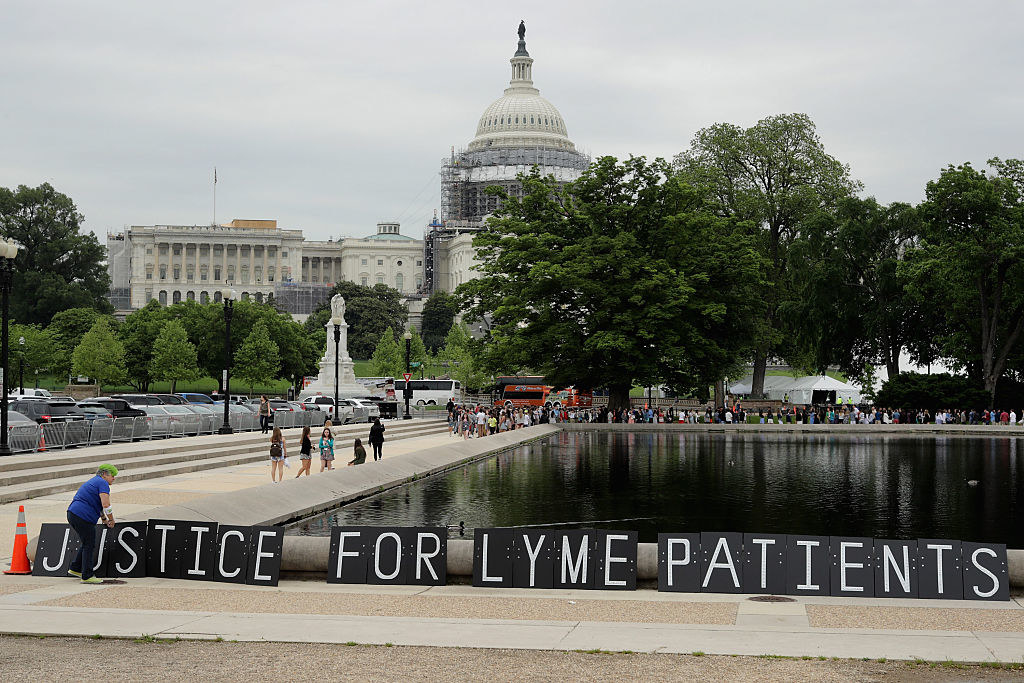
In late 2015, Lorraine Johnson was frustrated with what she felt was the slow progress of research on Lyme disease, the tick-borne rash that strikes thousands of Americans every year, in apparently increasing numbers. So as the head of LymeDisease.org, a leading advocacy group, she launched her own study: MyLymeData.org.
The site has since surveyed 7,000 people, Johnson reported this month at a conference in the San Francisco Bay Area. The site calls itself “the first national large-scale study of chronic Lyme disease.”
It’s one of the newest large online registries built by patients with rare or understudied conditions. Feeling ignored by academics and Big Pharma, they turn to the internet, where they can pool the collective wisdom of people who might otherwise never enroll in a clinical trial.
Scientists are increasingly relying on apps and websites like this one to conduct research. But as this approach becomes more popular, researchers have questions about its inherent lack of rigor and standardization.
Online surveys typically don’t require proof of a diagnosis, and self-diagnosis is often tricky. For example, the varied symptoms of Lyme disease — arthritis, fever, headaches, shooting pain, and memory problems, among others — crop up in many other conditions, making it difficult to identify conclusively, even for doctors. It’s also tough to keep people engaged in a study when they’re scattered across the country.
“The ability to get big data on large numbers of people fairly easily, that’s a strength,” said Dr. John Aucott, director of the Lyme Disease Clinical Research Center at Johns Hopkins University, who is not involved with MyLymeData. “The advantage is you’re getting patient symptoms — but the disadvantage is you don’t truly know they’re due to Lyme disease.”
Despite these potential issues, self-reported patient data could soon help pharma companies bring drugs to market faster. Under the 21st Century Cures Act, passed in December, companies applying for certain kinds of FDA drug approvals can submit data about how patients are reacting to drugs in the real world, rather than data collected from rigorously controlled clinical trials. Critics say this provision weakens regulatory oversight.
“In terms of generating really good evidence that you’re going to make people better off, [real-world data] is a good starting point, but it’s not the finish line,” said Vinay Prasad, a hematologist-oncologist at Oregon Health and Sciences University.
Around 300,000 people in the United States, almost entirely in the Northeast and upper Midwest, are diagnosed annually with Lyme, according to the Centers for Disease Control. The agency has clear criteria for diagnosing Lyme in its early days, including a tick bite, a bull’s-eye rash, and a lab blood test. A few weeks of antibiotics cures most patients. But some experience symptoms like headaches and joint and nerve pain for months, even years, after treatment.
The federal government has funded only a handful of Lyme disease studies, and one of the larger ones, published in 2001, enrolled just 130 people. All of the studies focused on patients who had symptoms even after taking antibiotics. Patients often call this advanced stage “chronic Lyme disease,” as does MyLymeData, though most doctors argue that this term has come to mean many things to different people and has no accepted definition. They and the CDC instead use “post-treatment Lyme disease syndrome.”
Johnson, who has published peer-reviewed studies of her own, says that she created MyLymeData to make up for this dearth of research on patients with lingering symptoms. “The problem with Lyme disease is essentially there is no data,” she told BuzzFeed News.
She doesn’t know of any cures or treatments in the works for Lyme patients who don’t respond to antibiotics — but hopes her database will inspire pharmaceutical companies to develop some.
The people who have signed up for MyLymeData, she said, “were just very anxious to push forward research because research had really kind of left them behind,” she said

At a conference hosted last fall by the Lyme Disease Association and Columbia University, Johnson presented findings from an unpublished survey of more than 4,000 MyLymeData participants. The survey responses showed that people who were diagnosed at an early stage were more likely to report being healthy than those who were diagnosed later, and many claimed that their doctors had failed to accurately spot the disease. Johnson said at the time that the findings showed both the need for physicians to make diagnoses early on, and for “more effective treatments to help those patients who remain ill.”
But experts note that MyLymeData’s database may not accurately reflect Lyme patients, particularly those with persistent symptoms, the hardest stage to diagnose.
For Aucott of Johns Hopkins, making a diagnosis of post-treatment Lyme disease syndrome is a painstaking process. There isn’t one clear biomarker, like a genetic mutation or an X-ray reading, that proves someone has the condition. He and a nurse interview a patient, then review all of their medical records and lab reports, to establish both that they were healthy before getting diagnosed and showed Lyme symptoms after their antibiotic treatment. Aucott also tries to figure out if they might have anemia, thyroid disease, chronic fatigue syndrome, or something else with similar symptoms.
“I’ve seen 500 or 1,000 patients with decades of work,” Aucott told BuzzFeed News. “That’s the level of detail you need to really be convinced you have a uniform population.”
He and other experts told BuzzFeed News that they’re worried that MyLymeData allows, but doesn’t require, people to provide lab readouts and doctors’ notes to prove which stage of disease they’ve had, or even that they ever had the disease. To sign up, participants simply need to check boxes saying they live in the United States and have been diagnosed for Lyme by a health care professional. Then they answer a barrage of questions, such as how many times they’ve been infected, when they were first infected, and which symptoms they’ve had. (To test the service, a Lyme-free BuzzFeed News reporter successfully signed up and filled out responses about her nonexistent condition.)
“I’m not sure this kind of registry would be super helpful other than to tell you a little bit about what patients who have been labeled with ‘chronic Lyme’ complain about or have been treated for it,” said Paul Auwaerter, a professor of medicine and Lyme specialist at Johns Hopkins.
Others question how well the database represents actual patients.
“The problem with Lyme disease is essentially there is no data.”
“If the data are based on volunteered testimony, how do we know that those who choose to volunteer adequately represent those who don’t?” Paul Lantos, an assistant professor of internal medicine and pediatrics at Duke University School of Medicine, said by email. “If recruitment is promoted by advocacy groups, then how do we know those who volunteer represent Lyme disease patients more broadly?”
Johnson admitted that MyLymeData relies on the honor system, but pointed out, “I don’t think 7,000 people would take the time to go through and complete the surveys and do the follow-ups if they didn’t have a diagnosis.”
And, she said, the beauty of the database is that if a researcher wanted to study something about biomarkers, they could easily contact people through MyLymeData and ask for their lab reports and other medical records. She says that she and the academic researchers she’s working with, whose names she declined to share, will always be careful to point out the limitations of their research.
It is possible to glean accurate insights about diseases from self-reported data, says Ben Heywood, president and co-founder of PatientsLikeMe, a website where patients go to discuss their conditions. But, he added, it takes “a fair amount of manual curation” to make the data useful for research institutions that team up with the company, such as the FDA. PatientsLikeMe members have reported more than 30,000 treatments and symptoms for various illnesses, which staff then translate into medical terms (such as translating “chemo brain” into the more technical term, “cancer treatment-related cognitive impairment”).
“Doing real-world evidence or patient-generated health data in a rigorous scientific and methodological way, the way we do it, is hard,” Heywood said.

It’s understandable that chronic Lyme patients would want to take matters into their own hands after feeling ignored by mainstream doctors.
“I definitely think that many patients feel alienated from the ‘conventional’ medical community,” Lantos wrote. ‘This project may help us understand where our communication fails patients.”
Online patient registries like MyLymeData are becoming more and more common; by one count, there are 20. The earliest ones were dedicated to patients with rare, lethal diseases like cystic fibrosis and muscular dystrophy, and now there are ones about cardiovascular health and Alzheimer’s disease.
Registries will likely proliferate under the 21st Century Cures Act, says Kim McCleary, managing director of FasterCures, a think tank that was a key supporter of the legislation. And as for concerns that their kind of data threatens scientific standards, McCleary counters that it’s not an either-or question.
“I don’t think anyone expects [patient data] is going to replace double-blind placebo-controlled trials,” she said.

